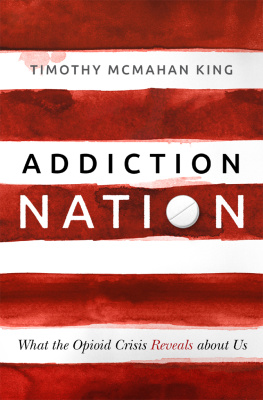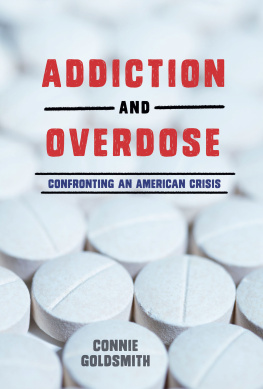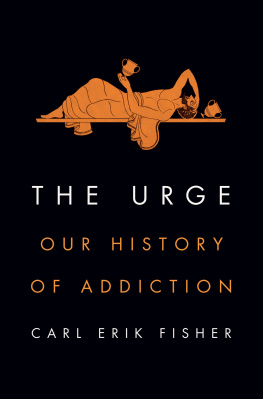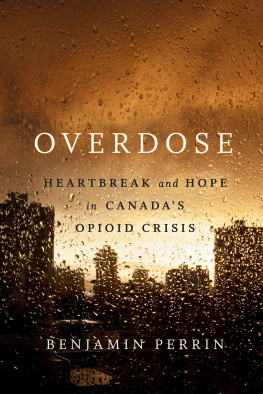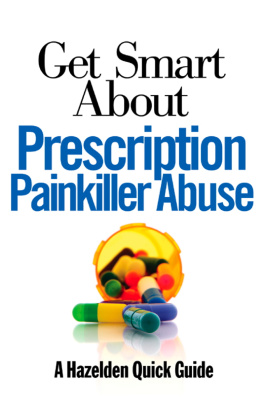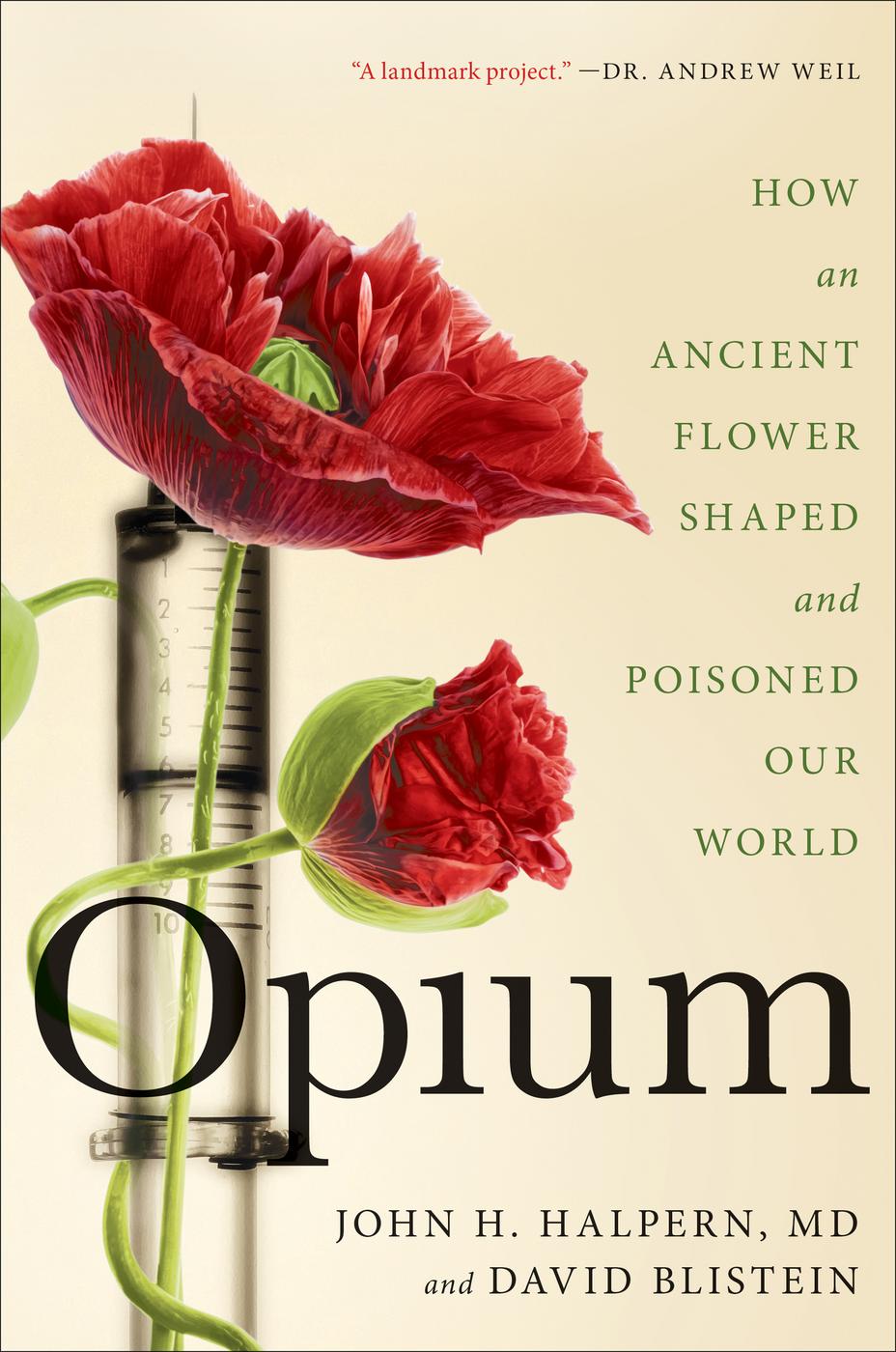
Copyright 2019 by John H. Halpern, MD and David Blistein
Cover design by Amanda Cain
Cover copyright 2019 by Hachette Book Group, Inc.
Hachette Book Group supports the right to free expression and the value of copyright. The purpose of copyright is to encourage writers and artists to produce the creative works that enrich our culture.
The scanning, uploading, and distribution of this book without permission is a theft of the authors intellectual property. If you would like permission to use material from the book (other than for review purposes), please contact permissions@hbgusa.com. Thank you for your support of the authors rights.
Hachette Books
Hachette Book Group
1290 Avenue of the Americas
New York, NY 10104
hachettebookgroup.com
twitter.com/hachettebooks
First Edition: August 2019
Hachette Books is a division of Hachette Book Group, Inc.
The Hachette Books name and logo are trademarks of Hachette Book Group, Inc.
The publisher is not responsible for websites (or their content) that are not owned by the publisher.
The Hachette Speakers Bureau provides a wide range of authors for speaking events. To find out more, go to www.hachettespeakersbureau.com or call (866) 376-6591.
Print book interior design by Thomas Louie
Photo Credits: p. 1, top: iStock.com/sadikgulec. p. 1, middle: Nikater/Wikimedia Commons/ https://commons.wikimedia.org.wiki/User:Nikater. p. 1, bottom: CC BY/Wellcome Collection. p. 2, top: Than Saffel/Stone Circle Productions. p. 2, middle: Ino Ioannidou and Lenio Bartzioti/American School of Classical Studies at Athens, Corinth Excavations. p. 2, bottom: Miniature from the Post Mundi Fabricam, French codex, first quarter of the 14th century. p. 3, top: Library of Congress, Prints and Photographs Division [LC-USZ62-92635]. p. 3, bottom: Reproduced with permission from Lancashire Archives, Lancashire County Council. p. 4, top: Than Saffel/Stone Circle Productions. p. 4, middle: Unidentified artist, Chinese School, 19th century. Hongs at Canton, China. Oil on Canvas, 2019 Museum of Fine Arts, Boston. P. 4, bottom: Lithograph after W. S. Sherwill, c. 1850. CC BY/Wellcome Collection. p. 5, top: David Blistein. p. 5, middle: William L. Clements Library of American History, University of Michigan. p. 5, bottom: Science Museum, London. CC BY/Wellcome Collection. p. 6, top: Public domain. p. 6, middle: Library of Congress, Prints and Photographs Division [LC-DIG-npcc-28561]. p. 6, bottom: Library of Congress, Prints and Photographs Division [LC-USZ62-87322]. p. 7, top: Library of Congress, William P. Gottlieb Collection, [LC-GLB23-0425 DLC]. p. 7, bottom: Bureau of Prisons Photograph. p. 8, top: U.S. Marine Corps photo by Cpl. Andrew J. Good; the appearance of U.S. Department of Defense (DoD) visual information does not imply or constitute DoD endorsement. p. 8, middle: Ollie Atkins/National Archives. p. 8, bottom: Courtesy of Vancouver Coastal Health.
Library of Congress Cataloging-in-Publication Data has been applied for.
ISBNs: 978-0-316-41766-2 (hardcover), 978-0-316-41765-5 (ebook)
E3-20190719-DA-NF-ORI
E3-20190625-DA-NF-ORI
John H. Halpern, MD:
For Abraham L. Halpern, MD, my father, mentor, and champion for human rights and ethical medical care.
David Blistein:
For Wendyand the sky that we look upon.
The problem of chronic opium intoxicationis so extremely complex and far-reaching, so intimately interwoven with public health, commerce, and trade, and social customs, and has evolved so insidiously that we may well ask if the use of opium ever was confined to its sole valuable function namely, that of a therapeutic agentamong the western nations, the United States seems to have acquired the reputationof being more widely and harmfully affected than any other.
New York Bureau of Social Hygiene, Inc., 1928
If there is a war on drugs, then many of our family members are the enemy. And I dont know how you wage war on your own family.
Robert Wakefield, Traffic (2000)
Explore book giveaways, sneak peeks, deals, and more.
Tap here to learn more.

H ow could it be?
The family and friends of more than 70,000 people say words to that effect every year after hearing that someone they knew died from an overdose.
I never expected to be one of them.
After all, Im a psychiatrist with a focus on addiction medicine. I know the symptoms and have been trained to spot the warning signs, skills Ive honedor thought I had honedthrough decades of practice.
Paul Roderick, as I will call him in an effort to preserve his familys privacy, was my beloved friendsmart, grandly inquisitive, loyal, funny, strong, and an excellent chess player. When we first met, I sensed an undercurrent of childhood rejections, self-parenting, and toxic events in his past, but over the years I watched as he seemed to find the independence and stability he yearned for.
In 1995, I invited him to New Mexico to help me on a federally funded project in which I was comparing the neurocognitive function and mental health of a few disperse groups: Members of the Native American Church (NAC) who had participated in at least 100 prayer services (in which mescaline-containing peyote is ingested for non-drug sacramental purposes) but never had problems with drugs or alcohol; former alcoholics who reported heavy drinking for at least ten years, but had been sober for three months or more; and Navajo tribespeople who never drank or used drugs nor were members of the NAC and didnt regularly participate in their prayer services.
Paul wasnt a researcher at the time. Actually, he didnt know quite what he was then or would be. He was working at the mental health center where we met and doing some freelance Spanish translations for a textbook company, while trying to figure out what to do with the rest of his life. One possibility was working in the fields of mental health or neuroscience, and the project seemed a perfect opportunity for him to find out more about both. The fact that he knew Spanish, and could get along with anybody in any language, made him the perfect person to greet our test subjects as well as explain the process to relatives and entertain any kids who tagged along so that they did not interrupt their parents treatment.
I later learned that there was another reason Paul had agreed to join mea woman named Jenny Anderson, who was the projects whip-smart neuropsychologist. Based solely on my description of her talents, Paul had decided he was in love with her. Paul was like that.
To his dismay, however, he learned from our other team members after arriving in Albuquerquehaving traveled 2,000 miles in his beat-up VW Jettathat Jenny already had a boyfriend. And not just any boyfriend: a young, good-looking, bearded guy named Jeff with a serious trust fund who lived just an hour away in Santa Fe.
To help Paul get over his apparent heartbreak, we drove out to Chaco Canyon, a remote but famous sacred site for the Hopi and Navajo, where there are some of the most remarkable petroglyphs and other pre-Columbian relics in the United States. A pilgrimage to Chaco is a rite of passage for any serious student of Southwest Native American culture.
There was no moon that night, so Paul howled at the Milky Way insteadin despair over the fact the universe was denying him the girl of his dreams, albeit one he had hardly met.
But I persuaded him to stay, and after work each day, Jenny, Paul, and I usually had dinner together, during which he tried to win her over by regularly belittling her boyfriend Jeff in ways that made the fact that she was attracted to him seem utterly absurd.



